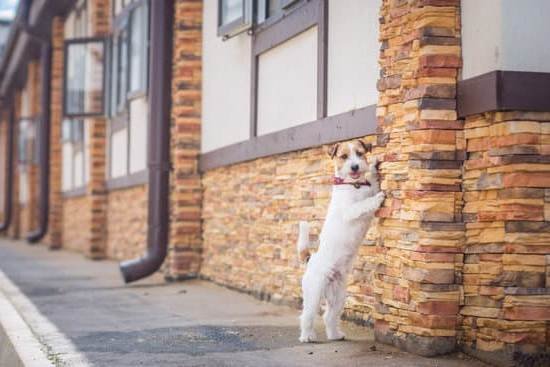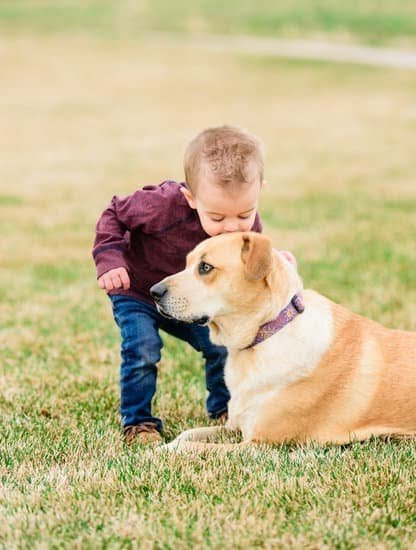Training an adult dog to use an indoor bathroom can be a challenging but necessary task for pet owners who live in urban areas or face inclement weather. In this article, we will explore the importance of proper training for indoor bathroom use and provide valuable tips on how to successfully train an adult dog to use an indoor bathroom.
From understanding the dog’s needs to selecting the right indoor bathroom option, establishing a routine, positive reinforcement training, and addressing setbacks, this comprehensive guide will equip you with the knowledge and strategies needed for effective indoor bathroom training.
When it comes to understanding the needs of adult dogs in terms of using an indoor bathroom, it is essential to consider their natural instincts and habits. Factors such as breed, size, age, and health conditions may also influence an adult dog’s ability to use an indoor bathroom effectively. Therefore, selecting the right indoor bathroom option that caters to your dog’s specific needs is crucial for successful training.
Establishing a consistent bathroom routine for your adult dog is key to reinforcing good habits and behavior. Positive reinforcement techniques play a significant role in encouraging your dog to use the designated indoor bathroom area.
Additionally, addressing accidents and setbacks with patience and constructive strategies is essential in promoting successful indoor bathroom training for adult dogs. Consistency and patience are vital throughout the training process, along with troubleshooting tips and additional resources that will help you overcome any challenges that may arise.
Understanding the Dog’s Needs
When it comes to training an adult dog to use an indoor bathroom, it is crucial to understand the natural instincts and needs of dogs when it comes to their bathroom habits. Dogs are creatures of habit and routine, and they have a strong instinct to keep their living space clean.
However, adult dogs may have established bathroom behaviors that need to be adjusted when transitioning to an indoor bathroom. Factors such as previous outdoor bathroom habits, medical conditions, or anxiety can all affect an adult dog’s ability to use an indoor bathroom.
To successfully train an adult dog to use an indoor bathroom, pet owners must take into consideration the specific needs and behaviors of their individual dog. Different breeds and sizes of dogs may have different preferences when it comes to where they relieve themselves indoors. Understanding these individual needs is essential in selecting the right indoor bathroom option that will be most appealing and effective for the adult dog.
In addition, it is important for pet owners to observe their adult dog’s behaviors and reactions during the training process. This observation can provide valuable insight into what may be hindering or aiding the successful transition to using an indoor bathroom. By understanding the dog’s specific needs and behaviors, pet owners can tailor their training approach accordingly and increase the likelihood of success in establishing proper indoor bathroom habits for their adult dog.
Selecting the Right Indoor Bathroom Option
When it comes to training an adult dog to use an indoor bathroom, selecting the right indoor bathroom option is a crucial step in the process. There are several options available, including grass pads, litter boxes, and artificial turf. Each of these options has its own advantages and considerations, so it’s important to carefully consider the needs of your dog before making a decision.
Considerations When Selecting an Indoor Bathroom Option
- Size and breed of your dog
- Space available in your home for the indoor bathroom setup
- Your dog’s preferences and habits
- Your lifestyle and daily routine
Before making a decision, take into account the size and breed of your dog. Larger dogs may require a more spacious indoor bathroom area, while smaller breeds may be comfortable with a smaller setup. Additionally, consider the space available in your home for the indoor bathroom. Some options may be more suitable for smaller living spaces, while others require more room.
Tips for Choosing the Right Indoor Bathroom Option
- Research different indoor bathroom options and their pros and cons
- Consider consulting with a veterinarian or professional trainer for recommendations based on your dog’s specific needs
- Take into account any limitations or restrictions in your living environment (e.g. apartment building rules)
- Introduce your dog to the selected option gradually to gauge their comfort and response
It’s important to research different indoor bathroom options and their advantages before making a decision. Consulting with a veterinarian or professional trainer can also provide valuable insights based on your dog’s specific needs. Keep in mind any limitations or restrictions in your living environment as well.
Introduce the chosen option gradually to allow your dog to become familiar with it and observe their comfort level with the new setup. By taking these factors into consideration, you can select an indoor bathroom option that best suits both you and your adult dog’s needs.
Establishing a Routine
To start, it’s important to understand that adult dogs, especially those who are used to outdoor bathroom habits, may initially struggle with transitioning to an indoor bathroom. By establishing a routine, you are helping your dog adjust to this new behavior in a structured and predictable manner.
One effective way to create a bathroom routine for an adult dog is by observing their natural bathroom habits. Take note of the times when your dog typically needs to go and try to align these times with your indoor bathroom schedule.
Additionally, feeding your dog at regular times can help regulate their bathroom needs, making it easier to establish a routine. Consistency is key here – try to take your adult dog to the indoor bathroom at the same times each day and use verbal cues or commands to reinforce the behavior.
By following these steps and being patient with your adult dog, you can effectively establish a consistent bathroom routine indoors. Remember that every dog is different and may require varying lengths of time to adapt. With dedication and persistence, the training process will eventually yield positive results in teaching your adult dog how to use an indoor bathroom.
Positive Reinforcement Training
When it comes to training an adult dog to use an indoor bathroom, positive reinforcement can be a powerful tool. This method involves rewarding desired behaviors to encourage their repetition and is highly effective in teaching dogs where they should go potty. Positive reinforcement creates a positive association with using the indoor bathroom, making the training process more enjoyable for both the dog and the owner.
Understanding Positive Reinforcement
Positive reinforcement involves giving your adult dog a reward when they exhibit the desired behavior of using the indoor bathroom. This reward can be in the form of treats, praise, or even playtime, depending on what motivates your dog. By associating going potty in the right spot with something positive, your dog will be more inclined to repeat this behavior.
Effective Positive Reinforcement Techniques
One effective technique for positive reinforcement training is clicker training. This involves using a clicker as a marker to indicate when your dog has performed the desired behavior, followed by a reward. Another technique is verbal praise and treats immediately after your dog uses the indoor bathroom. Consistency in rewarding your dog for using the designated area will help reinforce this behavior.
Positive reinforcement can also involve creating a positive environment around the indoor bathroom area. For example, you can place toys or interactive games near the designated spot to make it an inviting space for your adult dog. This will further encourage them to use that space for their bathroom needs.
By utilizing positive reinforcement techniques, you can effectively train an adult dog to use an indoor bathroom while strengthening your bond with your furry companion.
Addressing Accidents and Setbacks
Common Challenges and Setbacks
During the process of training an adult dog to use an indoor bathroom, it is important to anticipate and understand that accidents and setbacks may occur. Common challenges include the dog refusing to use the designated indoor bathroom area, confusion over the bathroom routine, or simply forgetting their training. Additionally, factors such as sudden changes in the household or health issues can also contribute to setbacks in toilet training.
Tips for Handling Accidents and Setbacks
When accidents happen, it’s crucial to remain calm and avoid punishing the dog. Instead, focus on redirecting the behavior towards using the designated indoor bathroom area. Clean any accidents thoroughly with an enzymatic cleaner to eliminate odors that could lead to repeat incidents. Additionally, revisit the basics of establishing a routine by taking your dog out according to their schedule or guiding them to the indoor bathroom area if they have an accident.
For setbacks related to changes in routine or environment, consistency is key. Reintroduce your dog to their bathroom routine by providing positive reinforcement when they use the indoor bathroom area correctly. Be patient and understanding as your dog reacclimates to their training after experiencing a setback.
Creating a Positive Environment
To minimize accidents and setbacks during indoor bathroom training, create a positive environment for your adult dog. This includes ensuring that their indoor bathroom area is easily accessible at all times and consistently maintained for cleanliness. Use positive reinforcement techniques such as praise, treats, or toys when your dog successfully uses their designated indoor bathroom space. This will help reinforce good behavior and encourage them to continue using the space for their toileting needs.
By addressing accidents and setbacks with patience, understanding, positive reinforcement, and consistency in training methods, you can effectively guide your adult dog towards successful indoor bathroom habits. Remember that every dog learns at their own pace, so be supportive as you work through any challenges that arise during this training process dedicated How To Train An Adult Dog Indoor Bathroom Dogs”.
Consistency and Patience
One important aspect of consistency is to maintain a regular bathroom schedule for the adult dog. This means taking the dog to its designated indoor bathroom area at the same times every day, such as first thing in the morning, after meals, and before bedtime. Consistently bringing the dog to the same spot will help reinforce the idea that this is where it should go to relieve itself.
Furthermore, it’s important for pet owners to consistently praise and reward their adult dogs for using the indoor bathroom appropriately. Positive reinforcement plays a vital role in training adult dogs, as they respond well to rewards and encouragement. By consistently praising and rewarding good behavior, pet owners can effectively teach their dogs to use an indoor bathroom.
| Aspect | Description |
|---|---|
| Bathroom Schedule | Maintain a regular schedule for taking the dog to its indoor bathroom area |
| Positive Reinforcement | Consistently praise and reward the dog for using the indoor bathroom appropriately |
| Training Progress | Progress may be slow at first, but with consistency and patience, adult dogs can learn new bathroom habits |
Troubleshooting and Additional Tips
In conclusion, training an adult dog to use an indoor bathroom may come with its challenges, but it is certainly achievable with the right approach and consistency. Understanding the natural instincts and needs of dogs when it comes to bathroom habits is crucial in effectively training them.
Factors such as breed, age, and health can impact an adult dog’s ability to adapt to an indoor bathroom, so it’s important to consider these factors when selecting the right indoor bathroom option.
Establishing a consistent bathroom schedule and using positive reinforcement techniques are key elements in successfully training an adult dog for indoor bathroom use. It’s also important to address accidents and setbacks in a positive and constructive manner, as well as maintaining patience throughout the training process. Troubleshooting tips for common indoor bathroom training issues are also essential for overcoming challenges that may arise during the training process.
By following these outlined strategies and understanding the needs of adult dogs, pet owners can effectively train their dogs to use an indoor bathroom. Consistency, patience, and a thorough understanding of the animal’s behavior will greatly contribute to the success of this training endeavor. With dedication and proper guidance, even adult dogs can learn new habits and routines for their indoor bathroom needs.
Frequently Asked Questions
How Do I Get My Adult Dog to Use an Indoor Potty?
Getting an adult dog to use an indoor potty can be achieved through consistent training and positive reinforcement. Start by choosing a designated spot for the potty, then use treats and praise to encourage your dog to use it.
How Do You Stop a Dog From Peeing and Pooping in the House?
To stop a dog from peeing and pooping in the house, it’s important to address any underlying issues such as anxiety or medical problems. Additionally, establishing a regular potty schedule, rewarding outdoor elimination, and using proper cleaning products can help prevent accidents indoors.
Can an Older Dog Be Trained to Use Pee Pads?
Yes, older dogs can be trained to use pee pads with patience and consistency. Start by placing the pad in a designated area and encouraging your dog to use it through positive reinforcement. Over time, the dog will learn to associate the pad with the appropriate place to eliminate.

Welcome to the blog! I am a professional dog trainer and have been working with dogs for many years. In this blog, I will be discussing various topics related to dog training, including tips, tricks, and advice. I hope you find this information helpful and informative. Thanks for reading!





